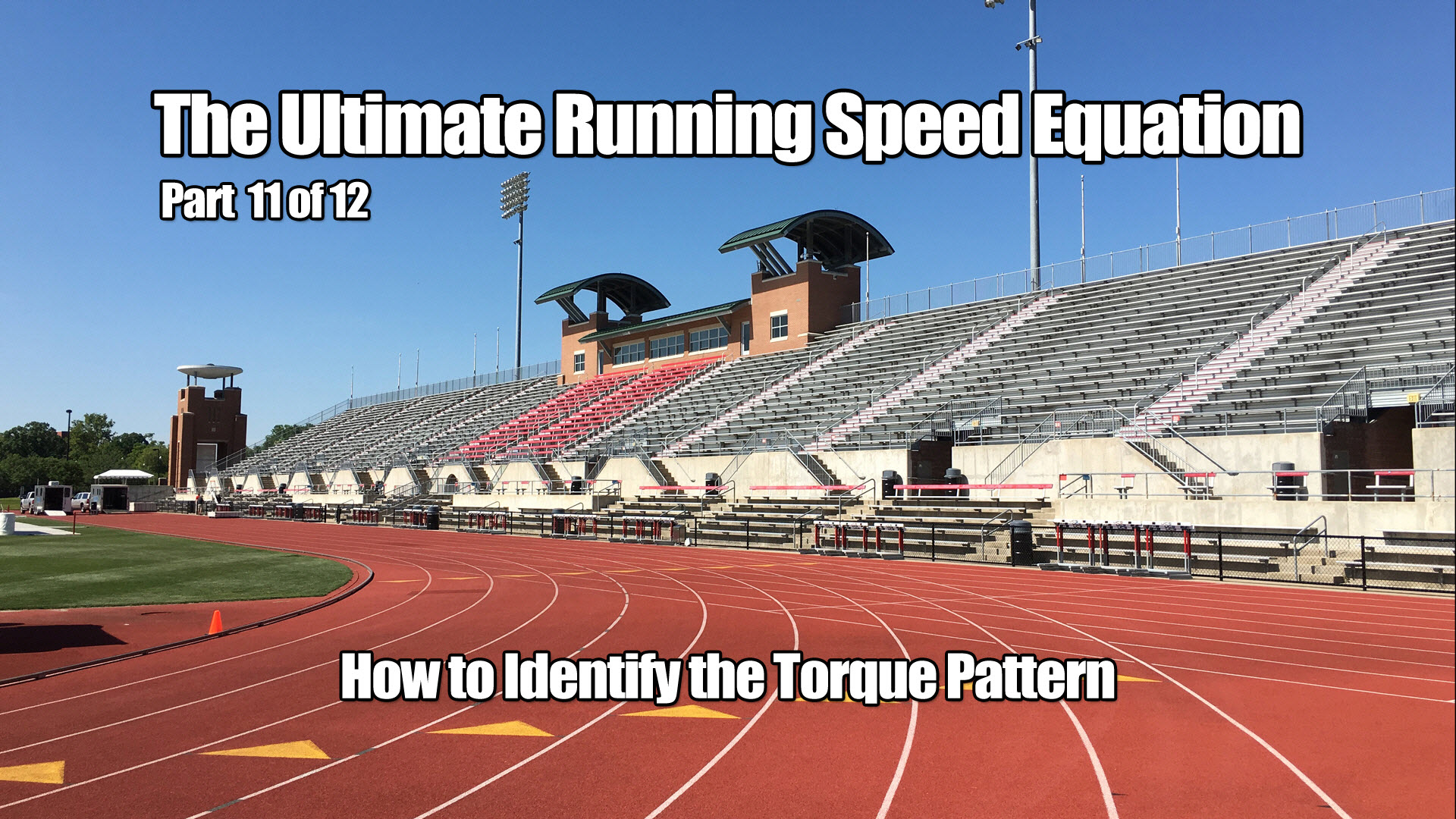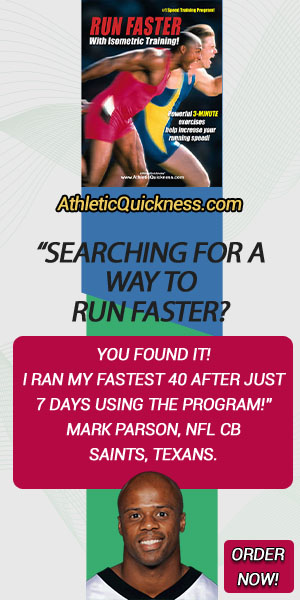First, you will recall a short while back that I said the hip flexors always work alone, so, if we look at the image on the left in Figure 11-1 below, we see that her left hip is being flexed and the torque creating a CW torque shown all by itself in yellow and if we look at the image on the right, we see that her right hip is being flexed creating a CCW torque all by itself shown in red.

So, knowing the hip flexors always work alone is something you have to remember and I will write this down below here in Figure 11-2.
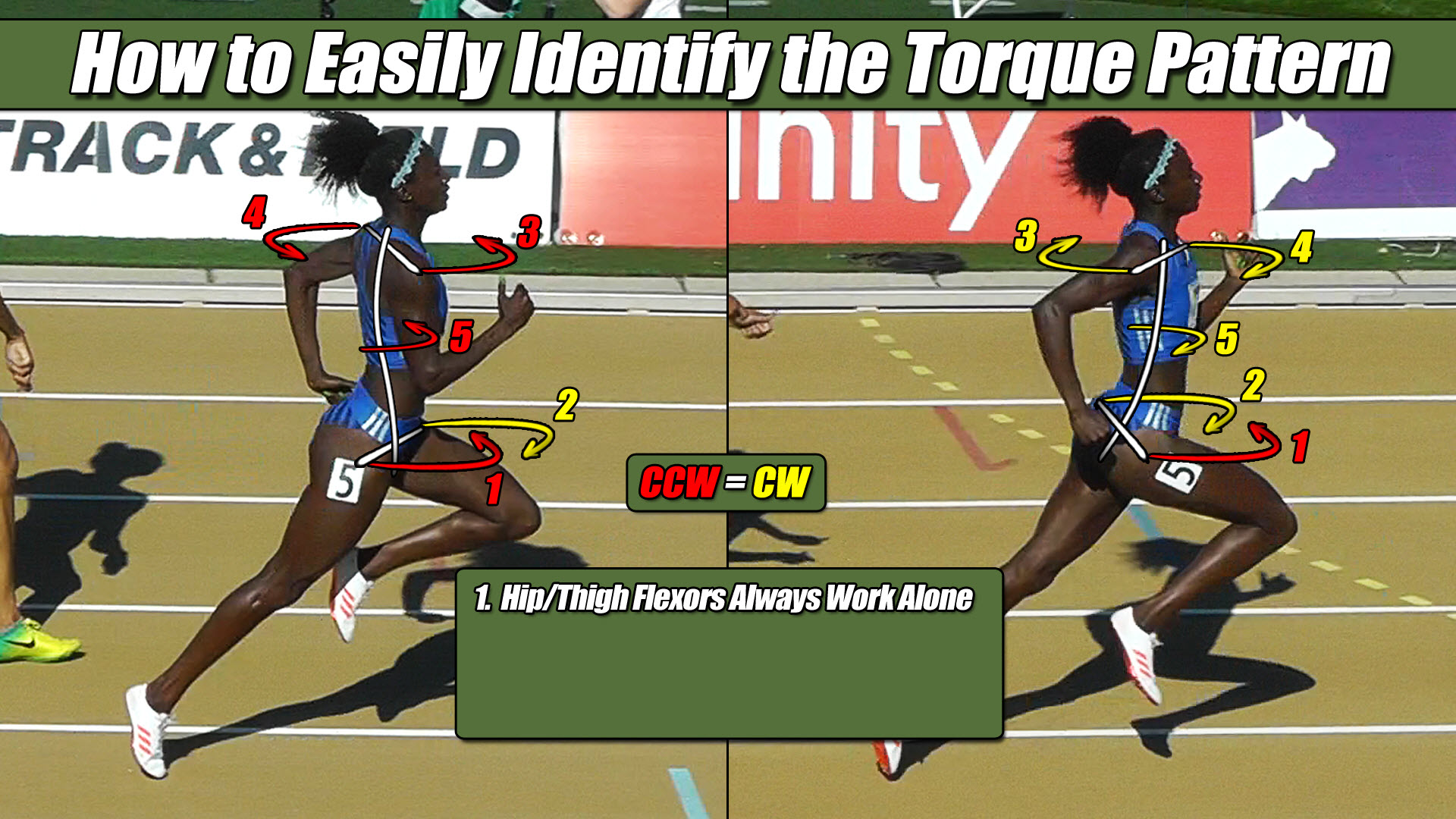
And for those who may be new to this terminology regarding the hip flexors, hip flexion means the same thing as thigh flexion, so, if you can simply spot which thigh, or, knee is being flexed upward then you have also identified which hip is in flexion and I know for me it’s much easier to key in on the movement of the entire thigh rather than trying to figure out what is taking place deep inside the hip joint, itself.
Okay, second, you will also recall a short while back that I said the torque from the legs doesn’t change direction and let me write that down below, here in Figure 11-3.

So, the right leg always produces a CCW torque, regardless if it is pushing from behind (on the left) or pulling from the front (on the right) and I have that written in the Figure 11-3 above. And I also said the left leg always produces a CW torque regardless if it is pulling from the front for the image on the left or pushing from behind for the image on the right and I will write that also in Figure 11-3, above.
This, too, is something you have to remember and a really easy way of keep track of which direction each leg is going is to know that the word CCW has the letter “R” in it, which to me, is my clue that it also refers to the “right leg” producing a CCW torque, so, as long as I can remember that the word CCW has the letter R in it, I then I will know that the Right Leg will always produces a CCW torque regardless of its position and the left one, FIGURE 32a or FIGURE 32B, by default, produces the CW torque. Easy enough, right?
So, these are the only two bits of information I need to be able to figure out someone’s torque pattern and so what I will do with this information, is first, identify the hip in flexion, then I will determine its direction based on whether it’s the right leg, or, left, and then I will know that everything else s going the other way.
So, let’s apply these three steps to the images already on the screen and see how easy this really is.
Now, for the image on the left in Figure 11-4 below. Step one says to first identify the hip, or, thigh that is in flexion and so I see that it is the left hip. Step two says to determine its direction and I see where the left leg always produces a CW torque so I see that it is doing just that, all by itself in yellow, and now I know everything else, step 3, is going the other way, which is CCW in red.
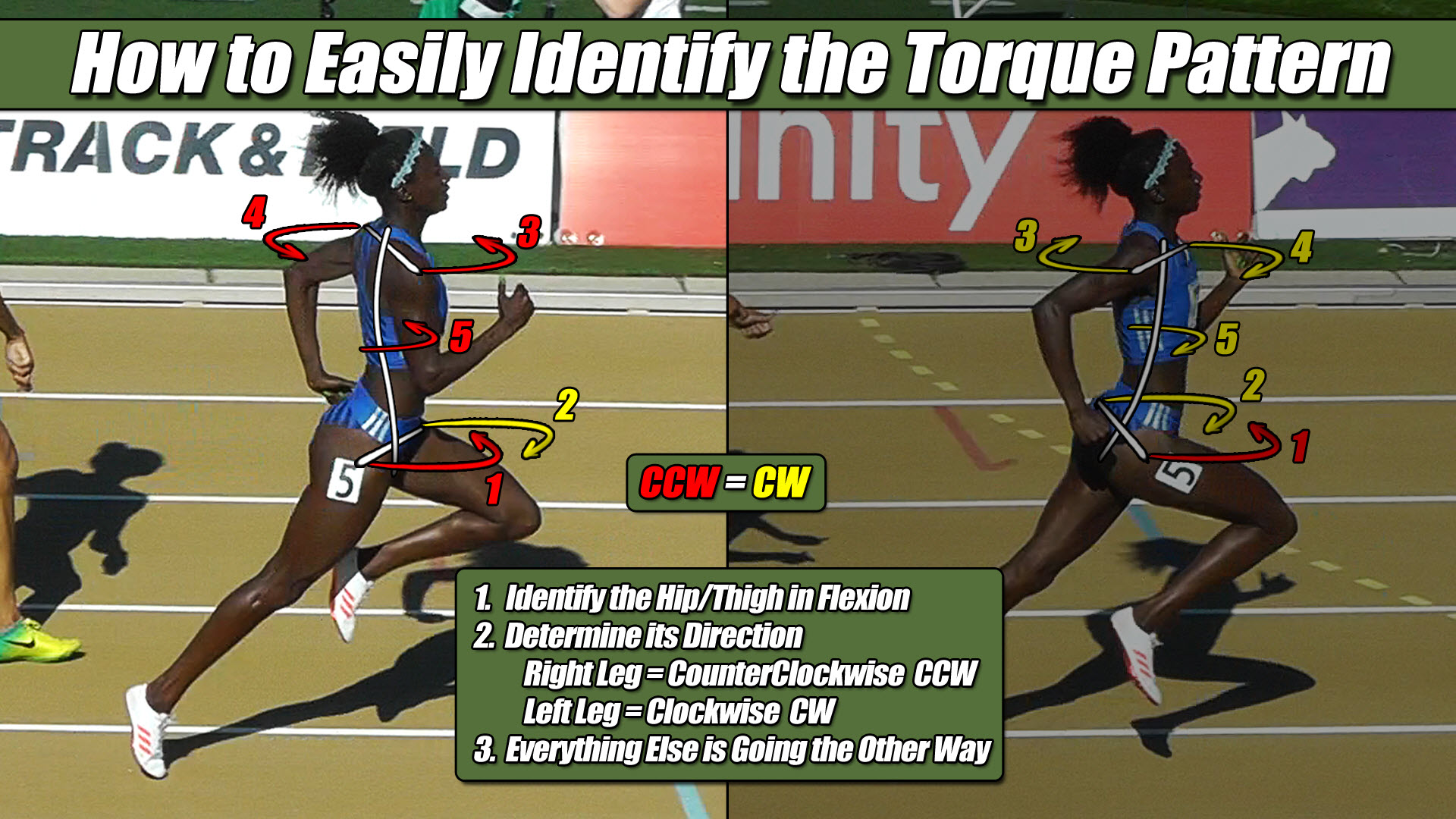
In the image on the right for Figure 11-5 below, again, I want to first identify the hip, or, thigh that is in flexion and I see it’s the right hip and now, I know the right leg always produces a CCW torque and I see that it is doing just that, all by itself in red, and now I know everything else, is going the other way, which is CW in yellow.
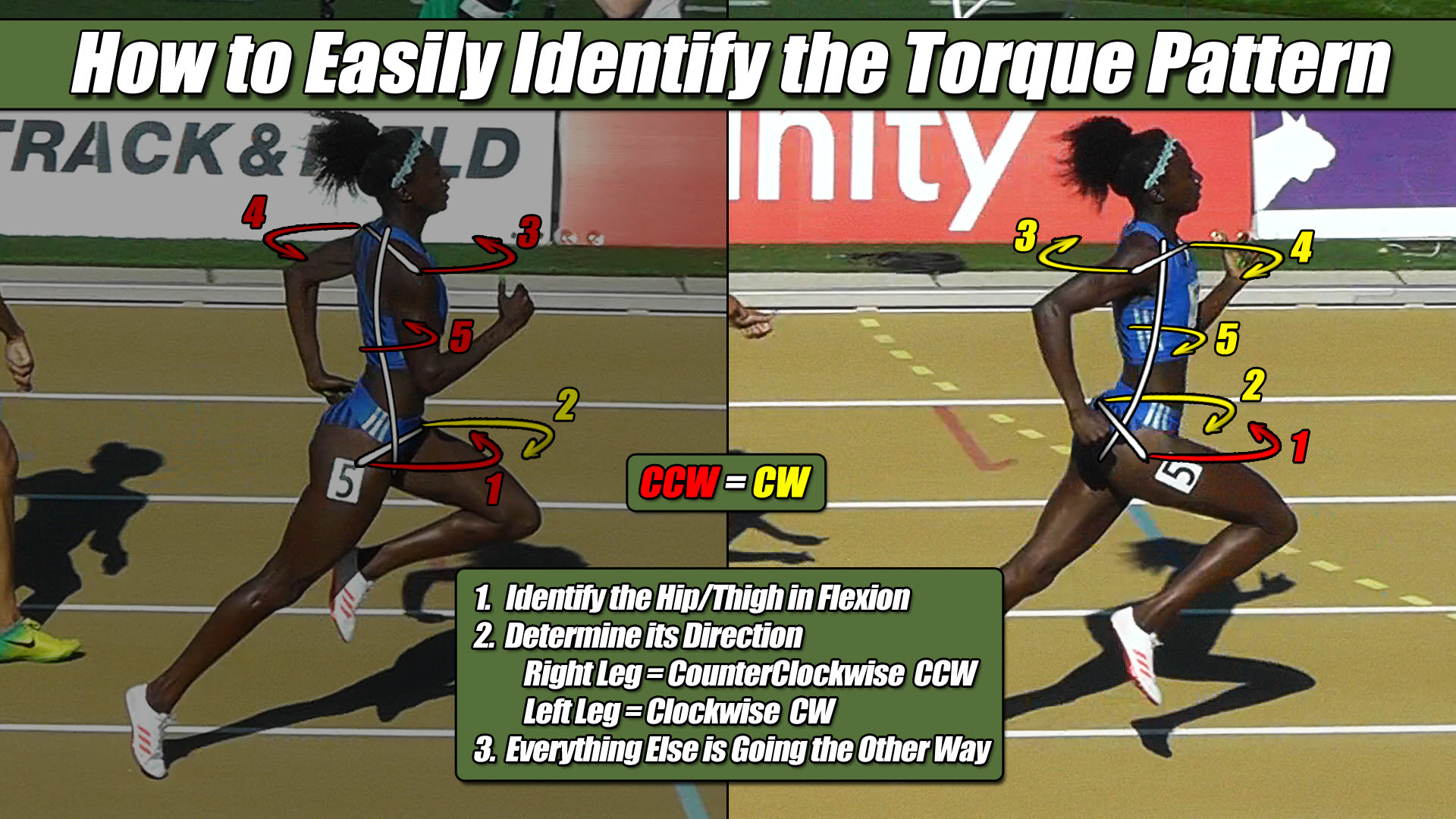
Don’t worry, if this is still taking a little while to figure out, we are going to get plenty of practice next when we apply these three steps to some really good athletes and by the time we are finished, you will be an expert at identifying each of these torque patterns.


